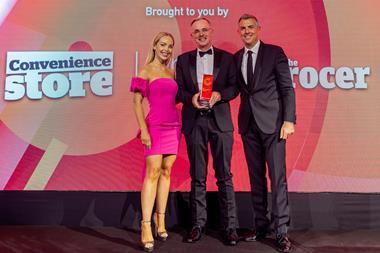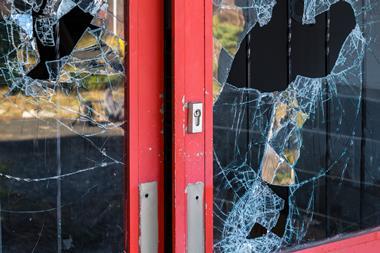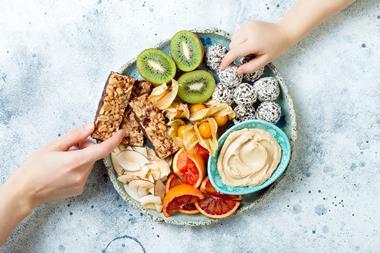Our C-Store Champions say food to go can provide big margins. Here they explain how they manage the category in their stores
Harry Goraya, Rosherville Post Office, Gravesend, Kent
Harry sings the praises of Country Choice’s offering, and is working on expanding his evening range
Scott Graham, McLeish Inverurie, Aberdeenshire
Some 90% of the food to go sold within Scott’s store is made on the premises, from hot breakfast items to curries and pies at lunchtime
Sandeep Bains, Simply Fresh, Faversham, Kent
Sandeep says his Subway offering is a business within a business and he has had to learn a lot in order to make it successful
Paul Stone, seven Spar stores in and around Greater Manchester
Offering FTG from 6.30am all the way through to 2am means Paul’s FTG operation has to be a slick one
What FTG offerings do you have in your store?
Harry: We provide a wide range of Country Choice pies and pasties. We have a full food-to-go (FTG) area where people can have a sandwich or wrap made especially for them. My wife is an exceptional cook and she makes her own homemade items for which people come in specifically.
Scott: We make 90% of our food to go on the store premises. We have a large range of salads, rolls and wraps. We also have a deli in store in which we make sandwiches to order, as well as hot food such as sausage rolls, bacon rolls and other hot breakfast items between 6am and 11.30am. Then we move on to offer curries, macaroni cheese, baked potatoes, pork pies and other lunch dishes.
Sandeep: We have a Subway counter and a range of Cuisine de France sausage rolls, pies and other hot food-to-go items.
Paul: We do breakfast on a meal deal – a breakfast sandwich and a hot drink for £2.50. At lunch time we go on to offer a range of burgers, potato wedges, pies and so on.
Who buys FTG from your store?
Harry: A wide range of customers come in for it, but they are definitely additional to those we had previously. We generally only do early morning and lunchtime trade. After lunch we just have a hot plate and pre-made sandwiches and rolls.
Scott: Because we’re a high street store we get different shoppers throughout the day. From 6am-8am we get lots of workmen looking for bacon rolls and coffee to go, plus they buy their lunch – so that’s a sandwich, crisps, perhaps chocolate and soft drink. After 8am it tends to be more coffees and croissants. Then from 11.30am we get the lunch trade so we get about 200 school children every day coming in, as well as the office workers.
Sandeep: We offer FTG from 7am to 9pm. The Cuisine de France offering is mainly picked up in the morning as it comprises mostly breakfast items. Passing builders and people on their way to work will buy these with their coffee to go. Subway is mainly bought by the lunchtime trade as well as dinner, and it appeals to a wide range of customers, from young kids to 70-year-olds.
Paul: We have a lot of builders, white van men and office workers come in in the morning to pick up some breakfast on the go. At lunch we get a lot of office workers in again. We serve food until 2am and are experimenting with items such as chicken strips and wedges in a box in the evening, but that sort of food mostly tends to be bought by people who have been out having a few drinks.
What are the business benefits of offering FTG?
Harry: You get a new demographic of shopper in your store so this increases sales and footfall.
Scott: The margins are high and it gives you a point of difference from your competitors. Having the offer in store gives the whole store a better feel, especially with the smell of freshly baked bread. It also provides a guaranteed footfall as you get your regular customers in to buy FTG.
Sandeep: It’s a growing category and it pulls people in. People will come in just for Subway, but they will sometimes pick up other items in the store.
Paul: Better margin for a start and you are improving your offering quite a lot by offering something warm and substantial. It changes people’s perception of your store. Feed me now is a very important shopper mission for us, particularly with the younger shoppers. It also links in well with our own-brand coffee to go, Cheeky Coffee.
What are the challenges that come with FTG?
Harry: You have to do it properly and put all the appropriate policies into place. If a customer spots staff doing something unhygienic they are not going to come back to you. You need dedicated staff – we have two part-time staff on the FTG counter.
Scott: I find that the category can be very weather dependent. We can go from making 20 salad boxes in the winter to 80 in the summer, and the hot food dies down a lot in the summer. It’s very labour intensive and it’s harder to train staff to do FTG than it is to train them on a till. I have the equivalent of 2.5 full-time members of staff looking after the deli every day. The legislation and health and safety requirements can also be a challenge
Sandeep: It’s a completely different operation to the rest of the store so you have to learn the business; you have to get more employees, understand different laws – it’s literally running a different business within your business. We have three full-time and three part-time staff just for the Subway.
Paul: Food safety is a big challenge. We invite the inspectors round and talk to them; we are always pro-active in getting their advice.
What products and services do you think are must-haves for c-store retailers?
Harry: Sausage rolls are important and the whole Country Choice range sells well.
Scott: Sandwiches. The most popular fillings for us are tuna and cheese as well as chicken mayo and coronation chicken.
Sandeep: Things like sausage rolls and bacon and cheese turnovers are very easy to offer. They provide high margins and there’s not a lot of waste.
Paul: Breakfast items such as bacon sandwiches. However, our most popular item, in terms of actual units sold, is probably our chicken burger. As something for the future, we want to work on our healthy food offering as I think that’s where the future is heading for our customer base. There are definitely more customers looking for healthy options, especially the office workers looking to buy their lunch.
Are there any products you’ve tried selling which have not worked?
Harry: Our customers like to feel they are getting value for money so if there is something they consider to be overpriced, it won’t sell.
Scott: I did some research and found that some healthy foods were selling really well in London. I tried it in my store and discovered that it’s just not what people want here. London is London, but every customer base is different.
Sandeep: We had a much larger bakery section before, but that didn’t work for us. We had a really wide range with niche breads such as tiger loaves. They sold, but not at the rate we wanted.
Paul: We struggle a bit with pies and pasties because our stores are all quite near a Greggs. We can sell the items that are different flavours to what Greggs offers, but it’s difficult to compete on the same items because we can’t match their price point.
What advice would you give to other retailers looking to set up a FTG offering?
Harry: It’s always a risk bringing in FTG and not knowing what will sell. It’s worth asking the supplier for assistance with taking wastage. Make sure the demand is there. Ask customers what they want. Make sure you make it look respectable and have a dedicated member of staff, not someone running back and forth from the till to the counter. Do a business plan; make sure you know the costs and set a time frame such as six months or one year and don’t stop until you reach that target… unless it’s going horrifically wrong.
Scott: Spend a day in another store where they are doing it, get behind the counter and really see how it all works. Work with the environmental health officers; call them and tell them what you’re thinking of doing and get their advice. Keep it simple. If you are selling more than 30 sandwiches it is definitely worth making them in-store. The trick is to make good base ingredients. So chicken mayo can be used for sandwiches, wraps, salads and baked potatoes. You can then add bacon to it, or sweetcorn, that way it’s not a great effort to create a wide choice for the customer.
Sandeep: Just do the really simple sausage rolls and bacon rolls in a small hot cabinet to start with. Then gradually work your way up.
Paul: Just buy a small oven to warm up sausage rolls and things like that. That’s all Greggs does. Croissants are popular and very easy to do. If possible, get seating inside or just outside the store. That sends the clear message to shoppers that you have food available to eat now and it changes the way people view the store.
How much space does each service take up in the store?
Harry: We were in the fortunate position where we were refurbishing the whole store when we set up the counter, so everything was being moved around anyway. We have the deli counter plus we have four to five metres of chilled shelves just for readymade FTG.
Scott: We have five metres of chilled space for sandwiches and a 2m deli counter, then a 1.5 metre hot plate. If we hadn’t had it from day one then we probably would have had to give up eight or nine metres of shelving.
Sandeep: It takes up about 200sq ft in the store. We had to get rid of our £1 range and reorganise the store.
Paul: It takes up about 150sq ft in the prep room.
How much did these FTG services cost to set up?
Harry: We’ve done it gradually over three or four years. It cost about £20,000 for the initial installation of the counter, lighting, sinks and so on. It took about a week to do the initial set-up, with three or four blokes working full time on it.
Scott: We’ve had FTG since day one, but the most recent thing is our bakery counter which took about four weeks to plan, but only a weekend to install. The deli was a significant investment, but the margin makes it more than worthwhile. We just bought an ice cream machine which cost £8,000, but we are probably doing £300-£400-worth of ice cream sales a week so it should have paid for itself by the end of the season.
Sandeep: It cost about £70,000 to set up.
Paul: We don’t have a service counter; we have a prep room in the back and a self-service hot food cabinet. It probably cost us about £20,000 for the prep room, hot food cabinet and coffee-to-go machine. We did have a FTG counter about 15 years ago, but we found it hard to make money when paying to staff it. It would probably take about two weeks to set it all up, but we always ensure it’s part of the initial set up with new stores now.
















![C-Store_Champions_logo-CHOSEN[1] 2023](https://d2dyh47stel7w4.cloudfront.net/Pictures/380x253/6/5/7/301657_cstore_champions_logochosen12023_817064.jpg)




No comments yet